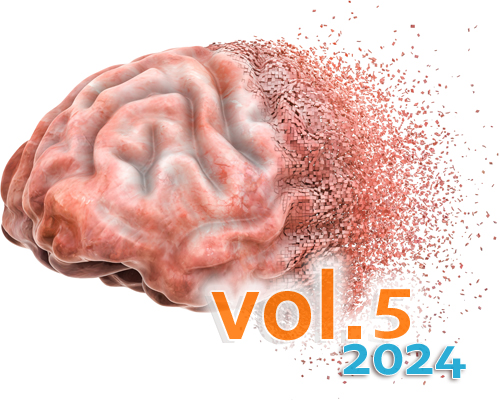Malignant glioma in L-2-Hydroxy Glutaric Aciduria: thorough molecular characterization of a case and literature review
DOI:
https://doi.org/10.17879/freeneuropathology-2024-5377Keywords:
L-2-hydroxyglutaric aciduria, CNS tumor, Paediatric-type diffuse high-grade glioma, DNA-methylation-classification, SequencingAbstract
L-2-hydroxyglutaric aciduria (L-2-HGA) is a rare neurometabolic disorder characterized by accumulation of L2-hydroxyglutarate (L-2-HG) due to mutations in the L2HGDH gene. L-2-HGA patients have a significantly increased lifetime risk of central nervous system (CNS) tumors. Here, we present a 16-year-old girl with L-2-HGA who developed a tumor in the right cerebral hemisphere, which was discovered after left-sided neurological deficits of the patient. Histologically, the tumor had a high-grade diffuse glioma phenotype. DNA sequencing revealed the inactivating homozygous germline L2HGDH mutation as well as inactivating mutations in TP53, BCOR and NF1. Genome-wide DNA-methylation analysis was unable to classify the tumor with high confidence. More detailed analysis revealed that this tumor clustered amongst IDH-wildtype gliomas by methylation profiling and did not show the glioma CpG island methylator phenotype (G-CIMP) in contrast to IDH-mutant diffuse gliomas with accumulated levels of D-2-HG, the stereoisomer of L-2-HD. These findings were against all our expectations given the inhibitory potential of 2-HG on DNA-demethylation enzymes. Our final integrated histomolecular diagnosis of the tumor was diffuse pediatric-type high-grade glioma, H3-wildtype and IDH-wildtype. Due to rapid tumor progression the patient died nine months after initial diagnosis. In this manuscript, we provide extensive molecular characterization of the tumor as well as a literature review focusing on oncogenetic considerations of L-2-HGA-associated CNS tumors.
Metrics
Additional Files
Published
How to Cite
Issue
Section
License
Copyright (c) 2024 Fleur Cordier, Pieter Wesseling, Bastiaan B.J. Tops, Lennart Kester, Pim J. French, Martin van den Bent, Felix Hinz, Eleonora Aronica, K. Mariam Slot, Floor Abbink, Marjo S. van der Knaap, Mariëtte E.G. Kranendonk

This work is licensed under a Creative Commons Attribution 4.0 International License.
Papers are published open access under the Creative Commons BY 4.0 license. This license lets others distribute, remix, adapt, and build upon your work, even commercially, as long as they credit you for the original creation. Data included in the article are made available under the CC0 1.0 Public Domain Dedication waiver, unless otherwise stated, meaning that all copyrights are waived.



















